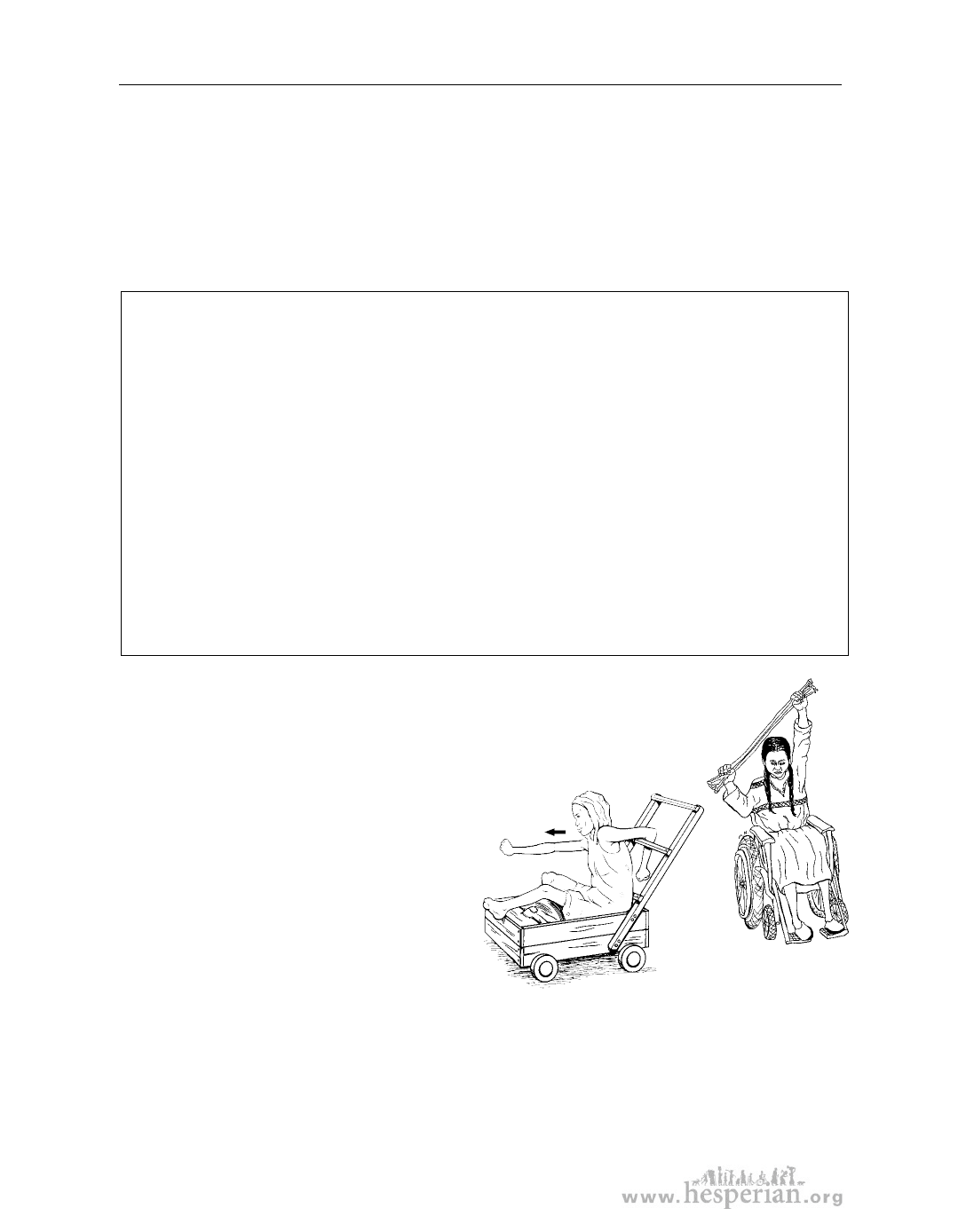
92 chapter 5: Taking care of your body
If you have tight muscles, paralysis from cerebral palsy or
a spinal cord injury, or joint pain
Women who have painful joints or tight (spastic) muscles should be careful with
exercises such as running or lifting heavy things. These kinds of exercises can put
too much stress on the muscles and joints. They can hurt your muscles instead of
making them stronger.
Relaxing tight (spastic) muscles
Women with cerebral palsy, multiple sclerosis, or spinal cord injuries often
have muscles that are very tight and stiff (spastic muscles). A muscle may
get very stiff or shake, and the woman may not be able to control how it
moves. To help with tight spastic muscles:
• Do not pull or push directly against the spastic muscle. That makes it
tighten more.
• Do not massage spastic muscles. Rubbing or massaging spastic muscles
usually makes them tighter.
• To manage spastic muscles, find a position that helps the body relax.
Rolling or twisting gently from side to side can help. Sometimes,
moving a different part of the body will help ease the spastic muscles.
You can also use warm cloths (wet or dry) to help relax spastic muscles.
If you use a wheeled cart, crutches, or wheelchair
If you use a wheeled cart, crutches, or wheelchair, you may start
to have trouble with your shoulders or wrists because of using
your arms so much. Your arms and shoulders can hurt
and wear out more easily. To help prevent this,
stretch your arms and shoulders often. For
example:
Women who use wheelchairs often
have strong arms. But it is important
to keep all the muscles in the arms
and shoulder strong, not just the
muscles you use to push your chair.
To prevent overusing your arms and shoulders, try not to do the same thing for a
long period of time. For example, change or alternate how you pick things up. First
use your left hand, then the right.
A good way to strengthen the other muscles in your shoulders is to push your
wheelchair backward.
A Health Handbook for Women with Disabilities 2007